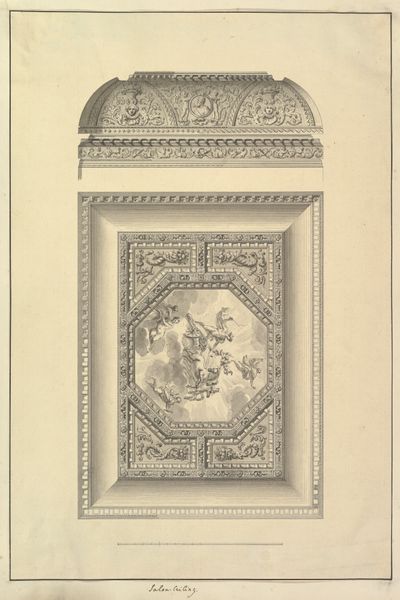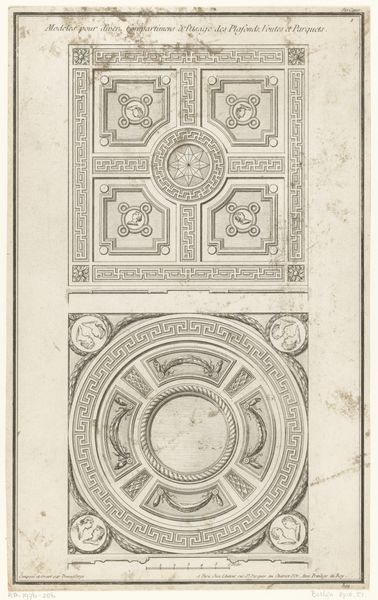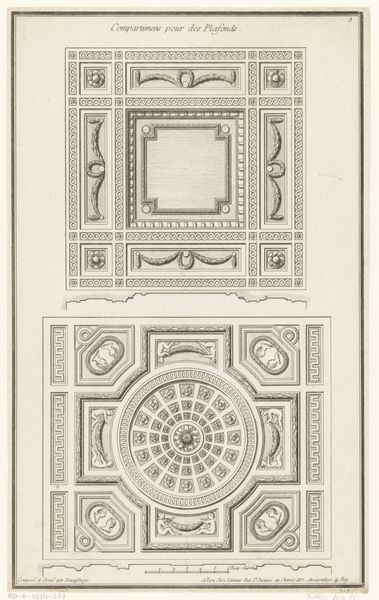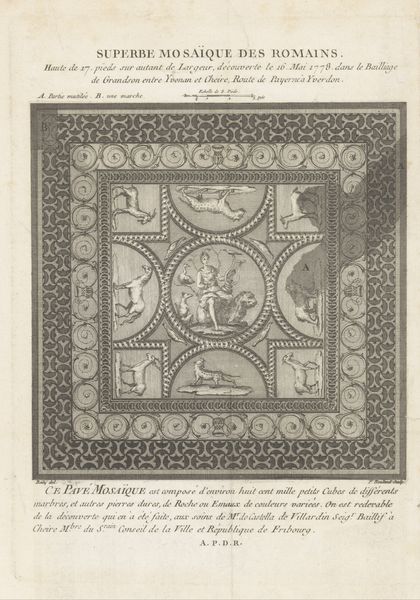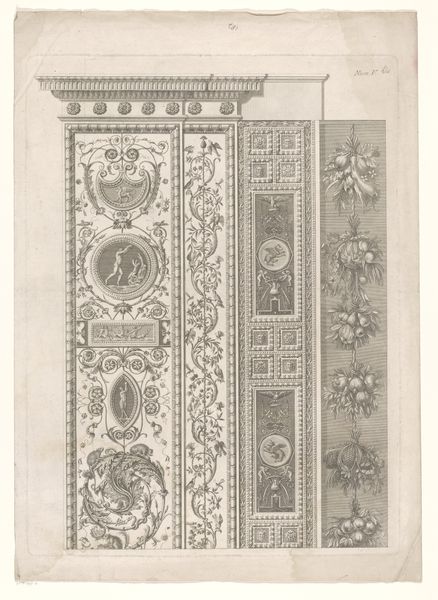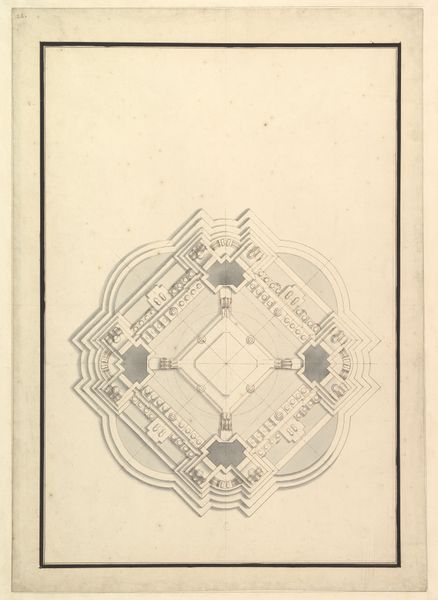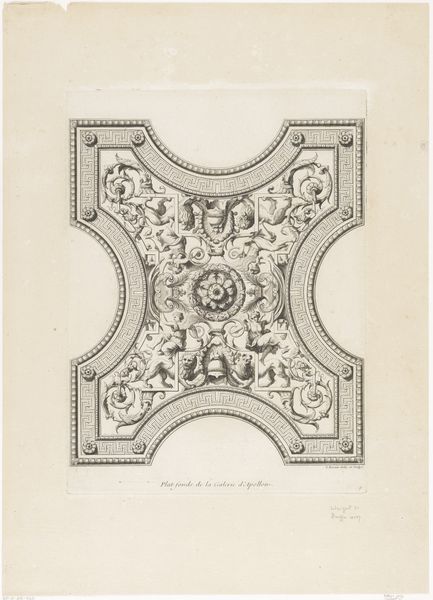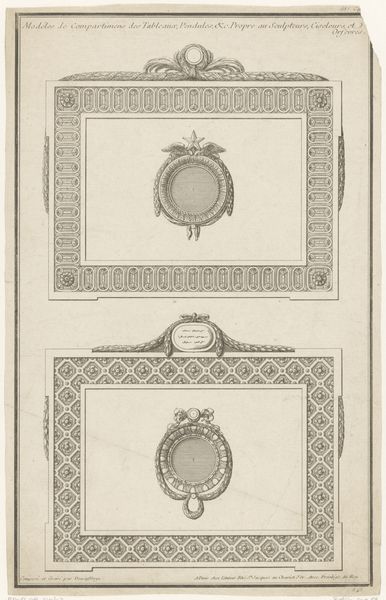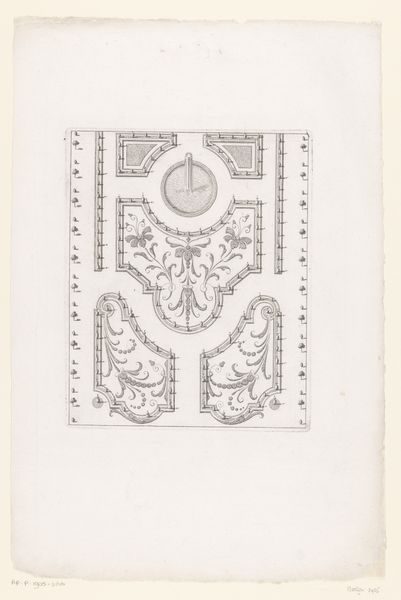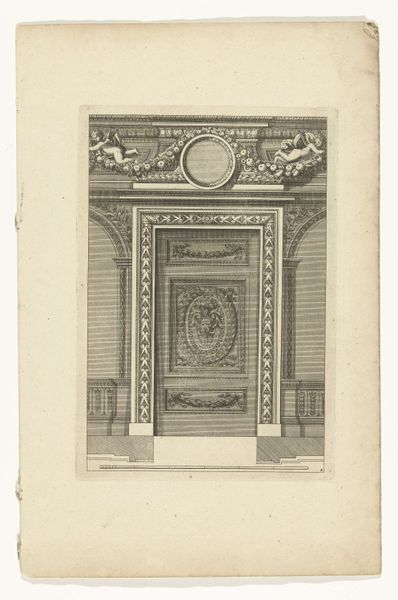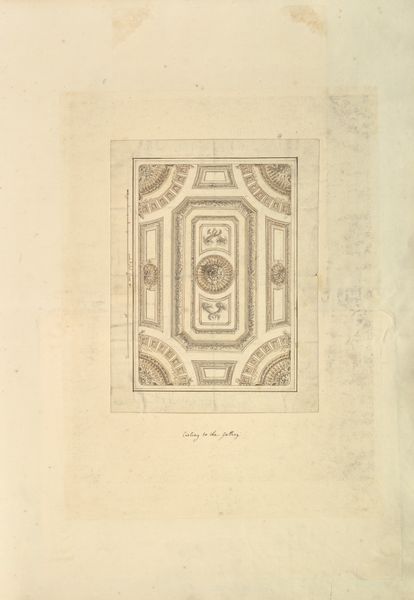
drawing, print, architecture
#
drawing
#
baroque
# print
#
geometric
#
decorative-art
#
architecture
Dimensions: sheet: 17 5/16 x 11 13/16 in. (44 x 30 cm)
Copyright: Public Domain
Curator: Looking at Isaac Ware’s 1735 print of the Hall Ceiling at Houghton Hall, now held at the Metropolitan Museum of Art, what’s your initial reaction? Editor: Stately, imposing… but cold. There’s a geometric rigidity to it that, while undoubtedly skillful, feels designed to impress rather than welcome. Curator: I think that’s fair. Consider that Ware wasn't just designing pretty shapes. He was part of a vast industry serving the landed gentry. Prints like this were critical for disseminating architectural styles, essentially creating blueprints for status. Editor: Exactly. Who was this Houghton Hall built for, and what did it represent in the broader societal structure? This wasn’t just about a ceiling, but about visible displays of wealth and power amid rampant inequality. Curator: The hall was constructed for Robert Walpole, the first de facto Prime Minister of Great Britain. Someone who consolidated considerable influence, not without plenty of controversy. Ware's detailed work offered a clear path for other craftsmen, potentially standardizing certain aesthetics while diminishing room for individual creativity. Editor: Standardization is interesting, but also exclusion. Were Black and Brown artisans, for example, involved in the creation and consumption of decorative schemes such as this? To what extent does this ornate style mirror a broader aesthetic of dominance and control? Curator: That's where the story gets complex, doesn’t it? How does this single sheet of paper documenting an architectural plan reflect labor practices of its time? Who benefits from disseminating prints like this one, beyond the immediately visible consumers? Editor: The opulence depicted in this drawing wasn’t born in a vacuum; rather, it depended upon extractive colonial practices and racial hierarchies that continue to resonate. While Ware focused on form and embellishment, its construction relied on global dynamics. Curator: You’ve definitely highlighted how Ware's drawing exists far beyond its formal qualities. It underscores a fascinating confluence between aesthetic ideals and power dynamics within a certain economic reality. Editor: Right, by questioning those “classic” design standards, perhaps we invite deeper understandings about who defines taste, whose labor builds those visions, and at whose ultimate expense.
Comments
No comments
Be the first to comment and join the conversation on the ultimate creative platform.
